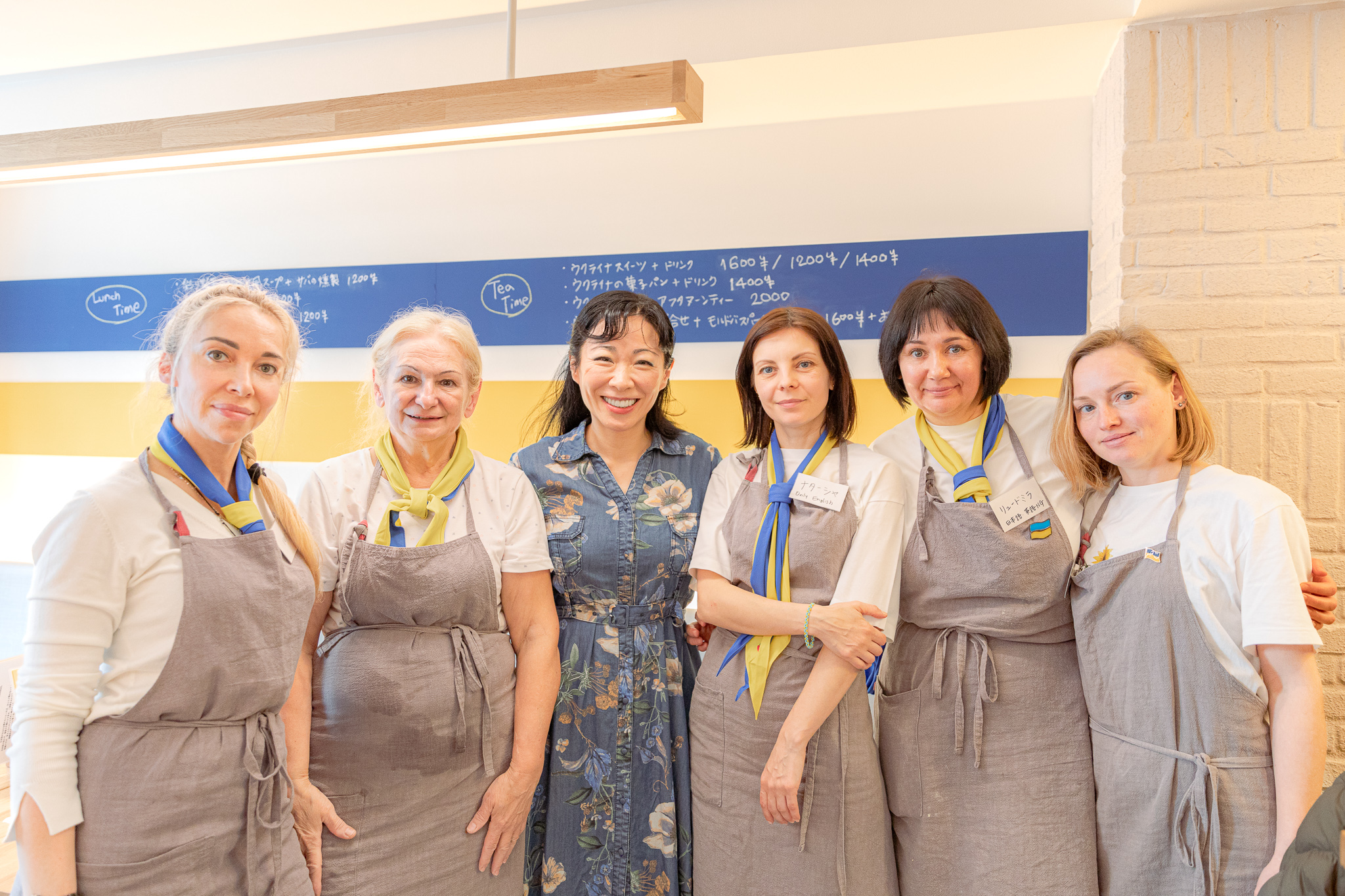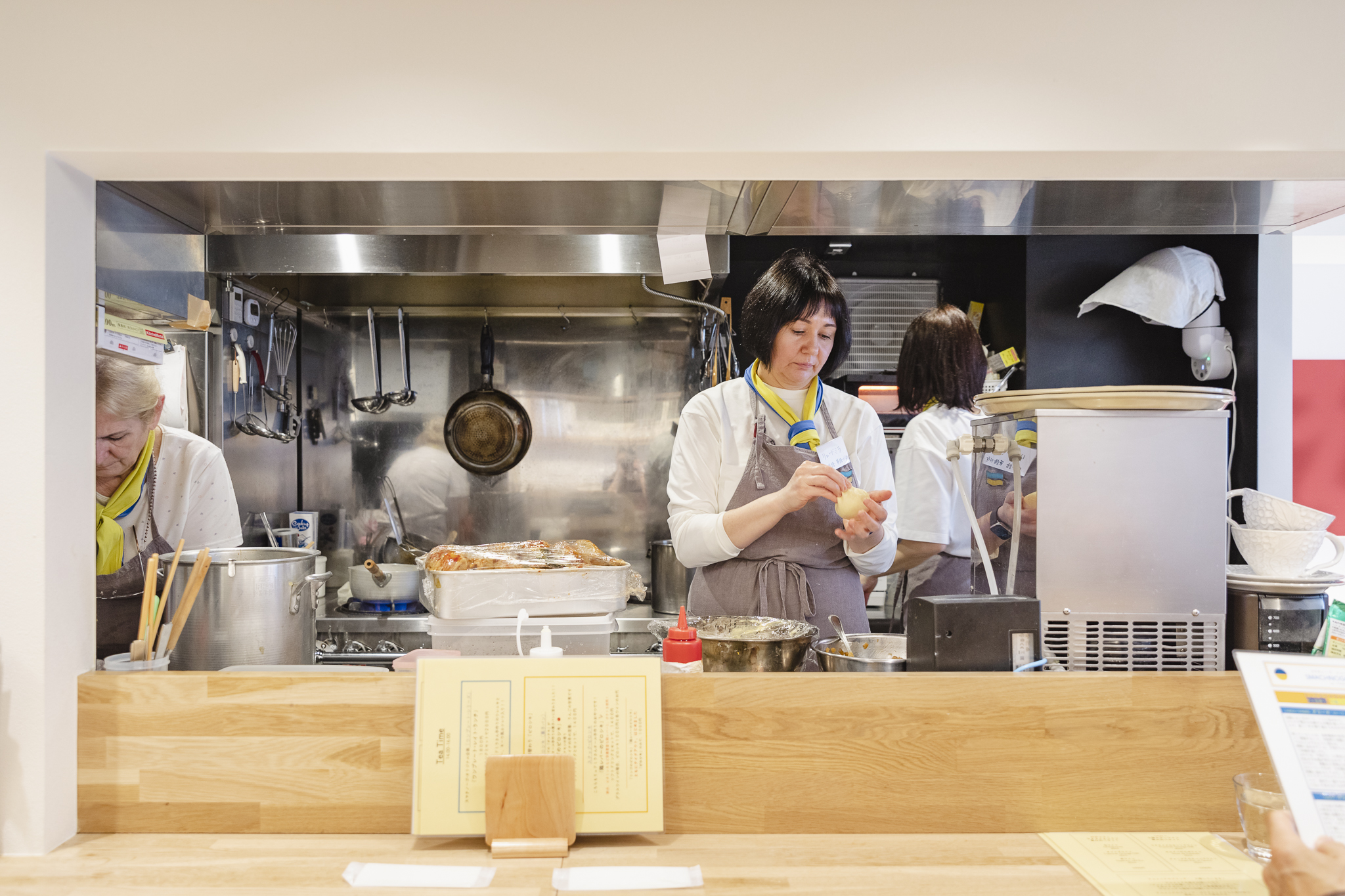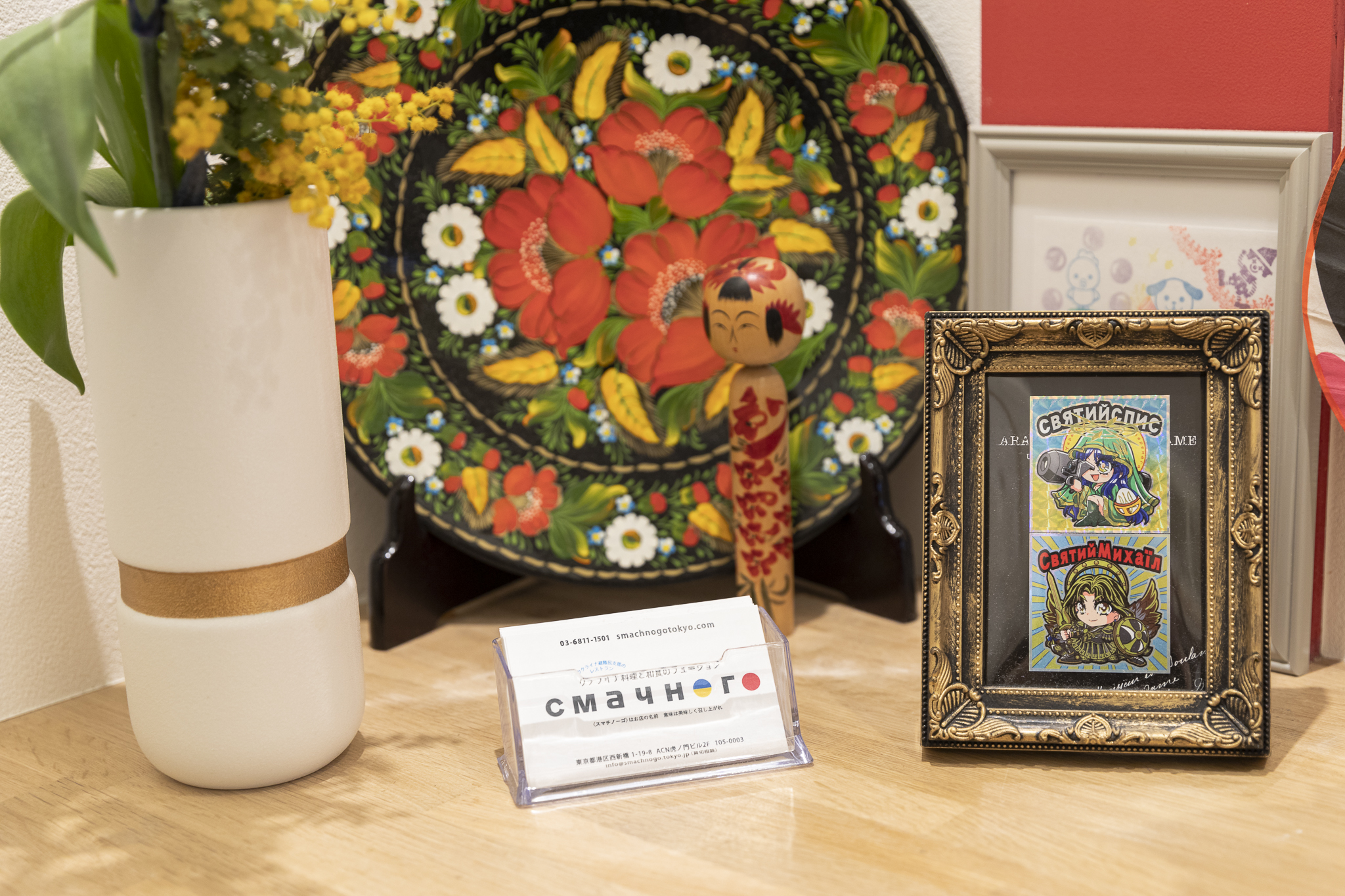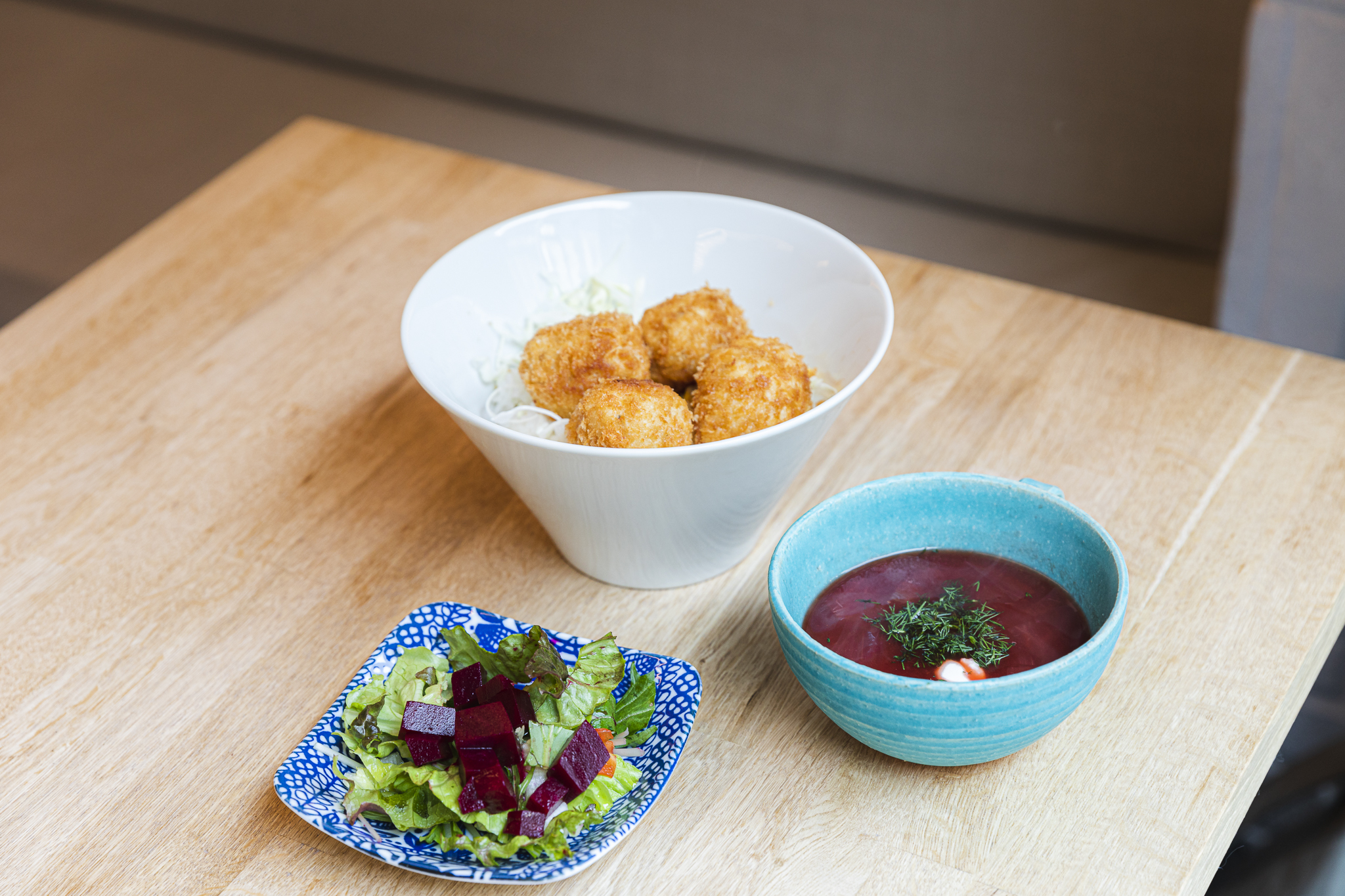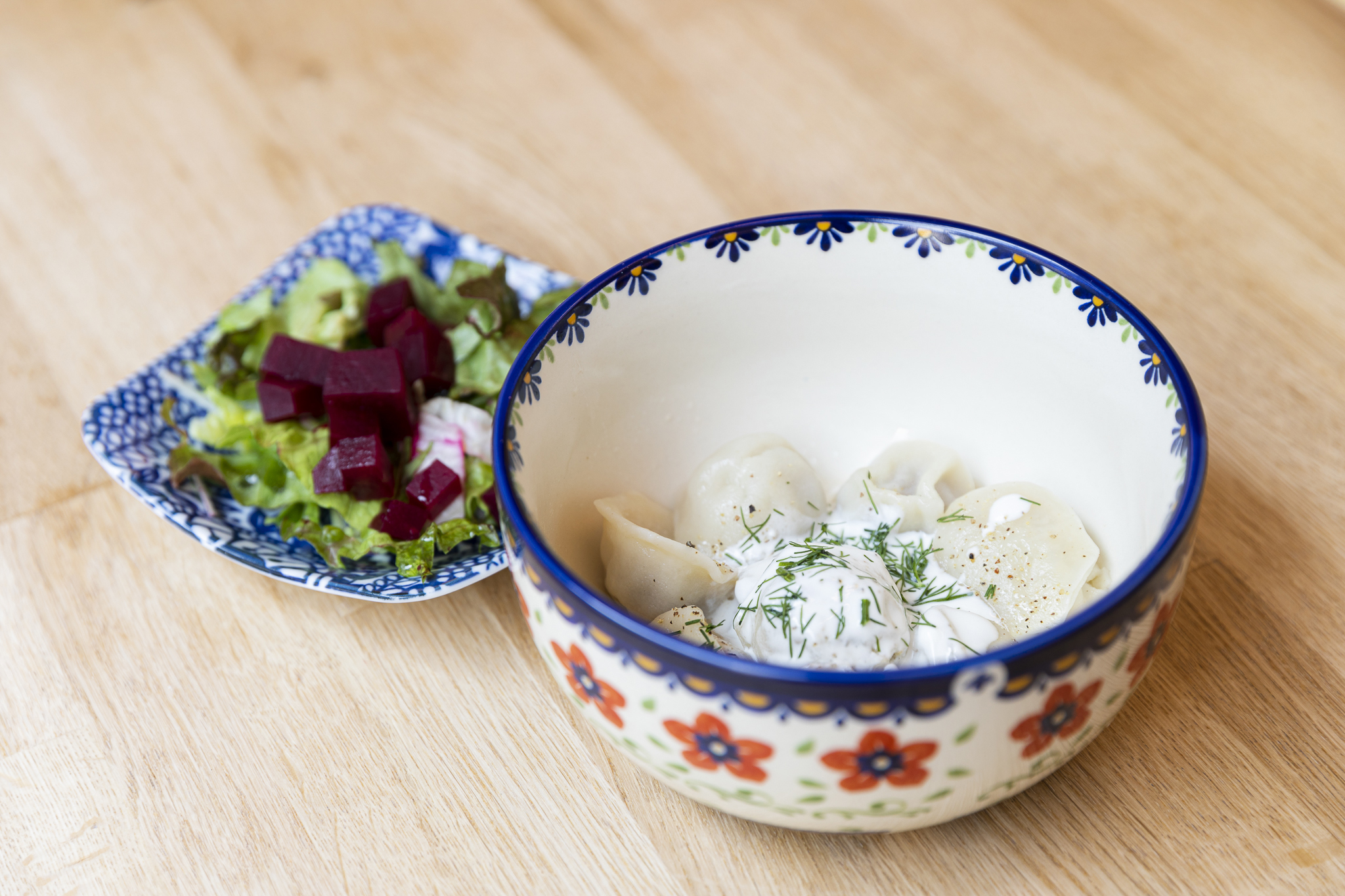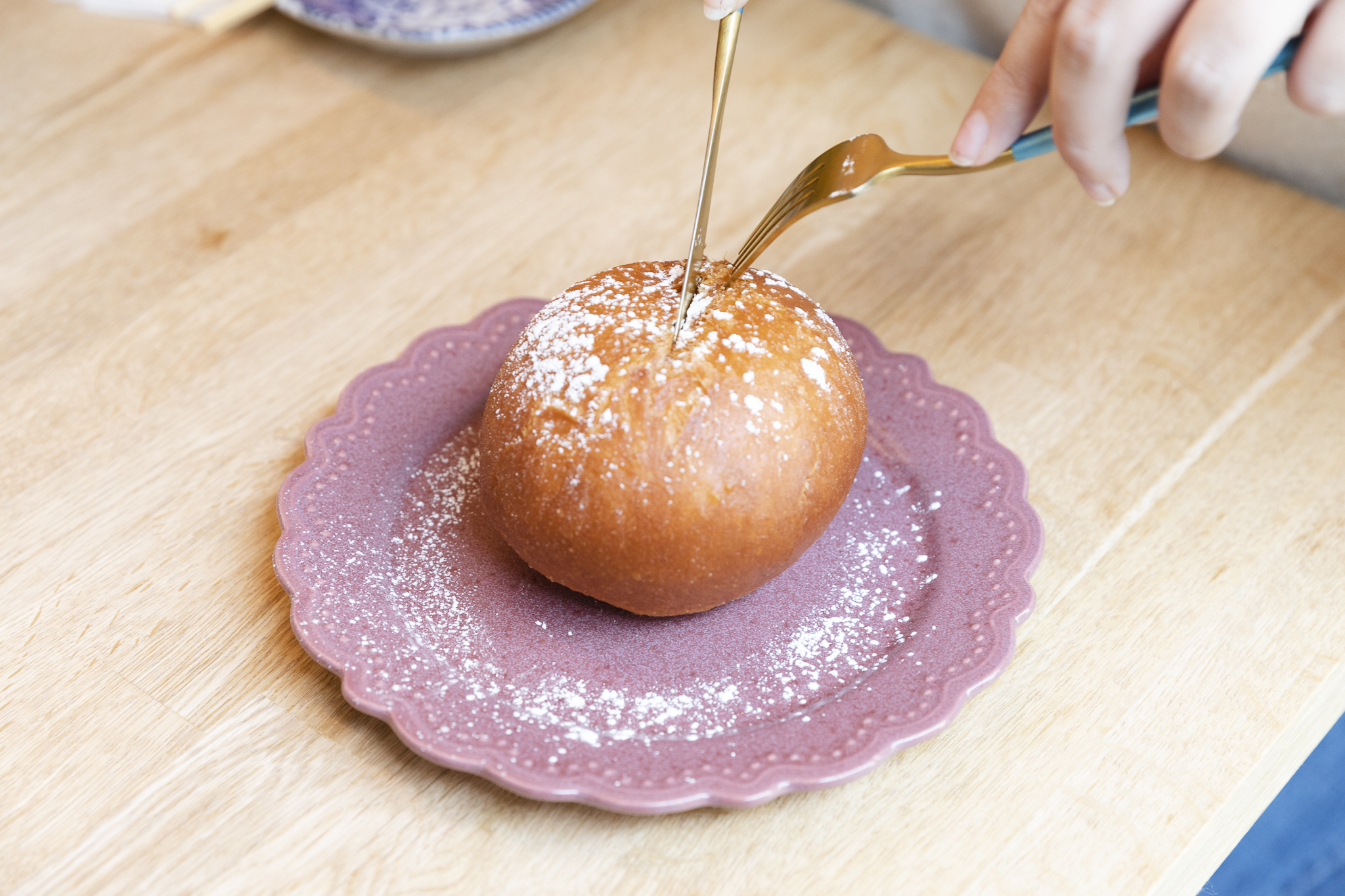*Smachnogo has closed its doors on September 30, 2023.
They say that the Ukrainian flag, which consists of two horizontal blue and yellow bars, represents a vast, calm sky over an endless field of wheat. Freedom and food. Peace and prosperity. Those are the things that Russia’s brutal invasion of the country has taken from the people of Ukraine. However, a small number of Ukrainian nationals have managed to regain a sense of home at Tokyo’s Smachnogo restaurant. Opened in September 2022, the eatery, which takes its name from the Ukrainian word for “bon appétit,” is the brainchild of actor, artist and designer Takane Ezoe.
“When the invasion of Ukraine started, at first, I wished for an early end to the war,” Ezoe tells Tokyo Weekender. “But as the conflict continued and the Japanese government started to accept Ukrainian refugees, I decided I wanted to do something to help the displaced people arriving in Japan.”
Thinking of all the things the refugees needed (housing, money, goods etc.), the as-of-then future proprietor of Smachnogo decided that the best thing she could offer them was a job. That presented another challenge. Since most of the Ukrainian arrivals could not speak Japanese, they only qualified for jobs that didn’t require any language skills, such as picking up and delivering packages. There’s nothing wrong with those occupations, but for people sheltering in a completely foreign culture, jobs like that risk exacerbating their feelings of loneliness, anxiety and isolation.
“That’s when I realized that even if the refugees couldn’t speak Japanese, just having them stand in front of people and interact with them would brighten their spirits,” Ezoe explains. “It’s how I came up with the idea of opening a restaurant. After all, a restaurant is a pleasant place where people can relax, which here is true for both the customers and the refugees. And since I wanted to set up the restaurant to support displaced Ukrainians, I knew I had to base it on Ukrainian cuisine. This would help the refugees feel connected to their homeland while making it easy for Japanese customers to support Ukraine.”
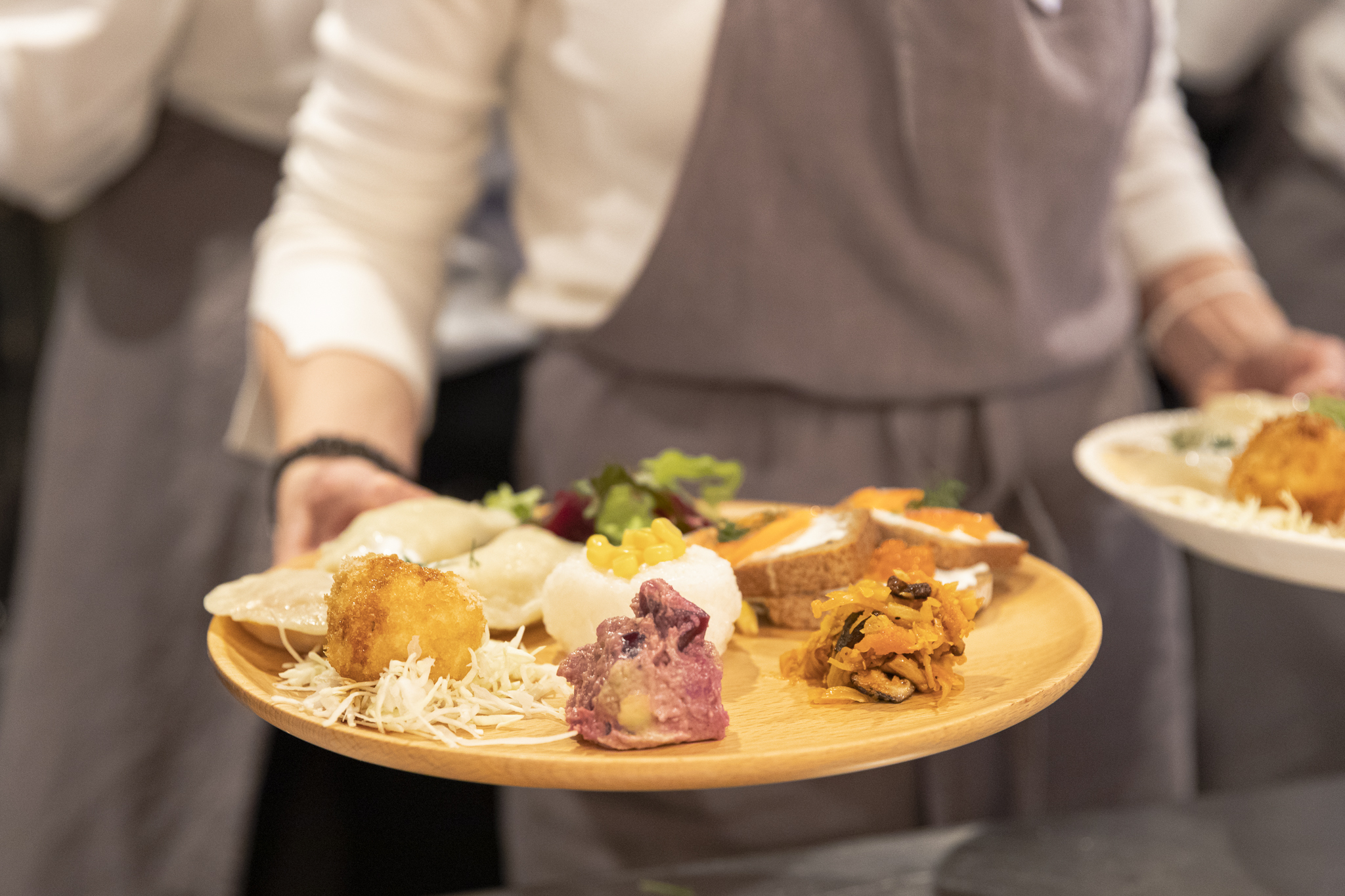
Today, Smachnogo employs seven Ukrainian refugees, like Irina Svidran from Dnipro. After having to leave her son and eldest grandson behind in Ukraine and her daughter-in-law and two granddaughters in Slovakia, Svidran made her way to Japan where she’s now staying with her daughter, son-in-law and grandson.
“My daughter takes me to various places on her days off because she cares for me,” Svidran explains. “Recently, we went to see the plum blossoms, which were very beautiful. She also took me to a mountain hot spring.”
Even in those precious, happy moments, though, Svidran’s thoughts are always with Ukraine. In her own words, “I miss my son. I miss my relatives, friends, acquaintances… I miss my home. The first thing I want to do after returning to Ukraine is to stay in for a month and just enjoy my home. I want to cry as much as I can from the joy of being safe in my own home. I want to cry happy tears for a week.”
The day she and other refugees are able to do that, Smachnogo will close because there will no longer be a need for it. In the meantime, the restaurant will continue to serve staples of Ukrainian cuisine as well as Ukrainian and Japanese fusion dishes.
“Ukrainian cuisine is quite meat-heavy,” Ezoe says. “But it also uses a lot of grains, vegetables and fruits. With it being a cold country, preserves are a big part of the Ukrainian diet. I think there are some similarities between their food culture and northern Japan’s. I’m trying to make the best use of such similarities in my recipes. For example, our signature dish is borscht made with Japanese bonito broth stock, a fusion of Ukrainian and Japanese cooking. Similarly, we have Kyiv-style katsudon (pork cutlet on a bowl of rice) but we also offer more-traditional, seasonal dishes handmade by our Ukrainian staff. This includes pirozhki buns, varenyky dumplings and blini pancakes.”
This combination of Ukrainian and Japanese traditions isn’t found just on the tables but also on the walls. The interior of the restaurant features Ukrainian and Japanese colors on opposite sides of the walls. The colors symbolize Ezoe’s hope that the Ukrainian arrivals will be warmly welcomed by the people of Japan, because that is the ultimate goal here: to make the refugees’ lives as pleasant as possible before they can return home.
“Smachnogo isn’t a restaurant that seeks profit, but a place that supports the displaced people of Ukraine,” says Ezoe. “For me, they are as important as family. Thankfully, our customers have been very friendly and supportive. Thanks to them, the time spent working here has been a small but meaningful escape from the anxiety of war for our Ukrainian friends.”
| Location | |
| More Info |
Website →
0368111501 |

